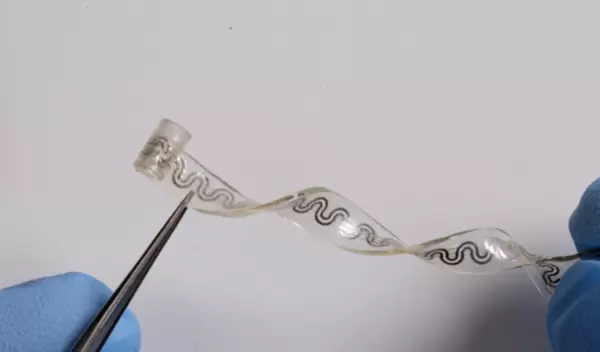
New dissolving implantable device relieves pain without medication
A team of scientists and engineers at Northwestern University supported by the U.S. National Science Foundation has developed an implantable pain relieving device -- a promising alternative to opioids and other addictive analgesics. The device could transform post-surgical pain management.
It provides targeted cooling to block pain signals and numb the nerves it envelops. The user can adjust the level of intensity using an external pump. The device is resorbable, meaning that after it is no longer needed, it naturally absorbs into the body and does not require surgical extraction. The team published a paper detailing the device’s design and efficacy in an animal model.
"Although opioids are extremely effective, they also are extremely addictive," said John Rogers, corresponding author of the paper. "As engineers, we are motivated by the idea of treating pain without drugs -- in ways that can be turned on and off instantly, with user control over the intensity of relief. This technology exploits mechanisms that have some similarities to those that cause your fingers to feel numb when cold. Our implant allows that effect to be produced in a programmable way, directly and locally to targeted nerves, even those deep within surrounding soft tissues."
The device has channels that contain a liquid coolant and dry nitrogen to produce the cooling effect that results in nerve numbness and pain relief. It also has a sensor and controls to prevent damage.
"Excessive cooling can damage the nerve and the fragile tissues around it," Rogers said. "The duration and temperature of the cooling must therefore be controlled precisely. By monitoring the temperature at the nerve, the flow rates can be adjusted automatically to set a point that blocks pain in a reversible, safe manner. Ongoing work seeks to define the full set of time and temperature thresholds below which the process remains fully reversible."
The paper-thin bioresorbable device dissolves naturally in days or weeks with no side effects and is small enough to wrap around a single nerve.


